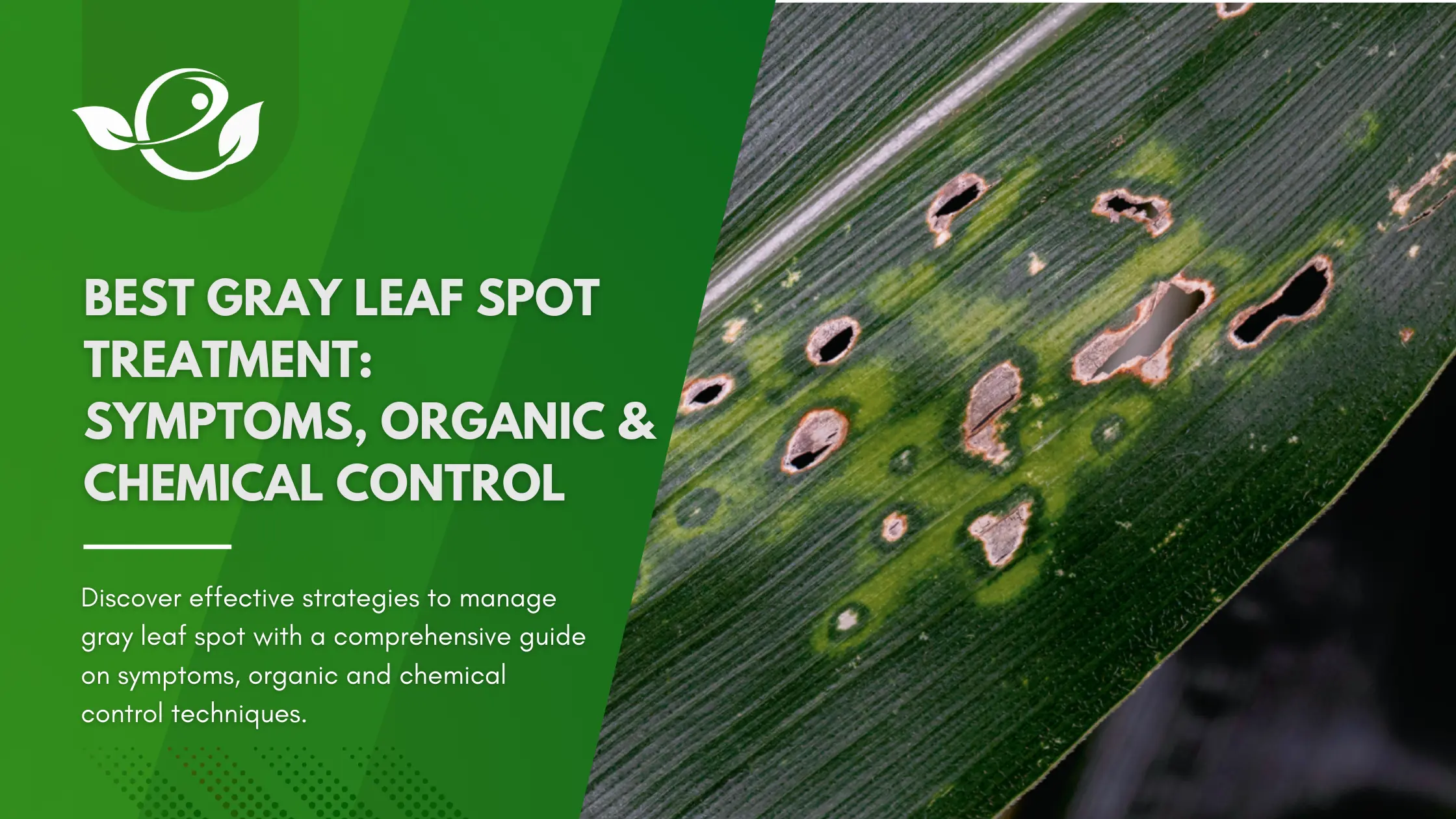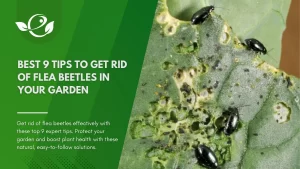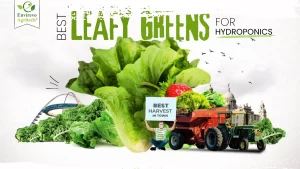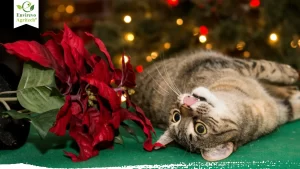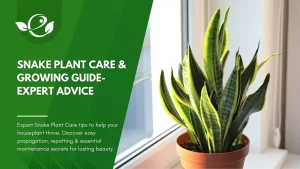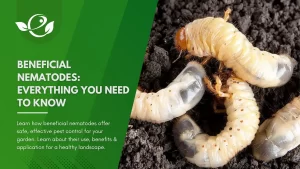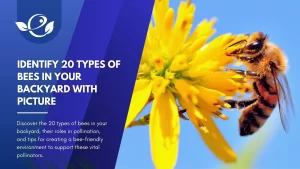Table of Contents
Gray leaf spot is a pervasive and damaging plant disease that poses a significant threat to various crops and ornamental plants, particularly those within the grass family. This disease, primarily caused by fungal pathogens, can lead to severe economic losses in agricultural settings and diminish the aesthetic and functional value of turfgrasses and other ornamental plants. Understanding and addressing gray leaf spot is crucial for farmers, gardeners, and landscapers alike.
The purpose of this blog is to provide a detailed and expert guide on the best practices for identifying and treating gray leaf spot. We will delve into the symptoms of the disease, explore a range of organic and chemical control methods, and discuss how to implement an effective IPM strategy. By equipping readers with this knowledge, we aim to empower them to protect their plants from gray leaf spot, ensuring healthy and productive growth.
In the following sections, we will cover the nature of the pathogen responsible for gray leaf spot, the environmental conditions that favor its development, and the range of plants susceptible to this disease. We will then move on to a detailed discussion of the symptoms, followed by comprehensive guides on both organic and chemical control methods. Finally, we will outline how to integrate these methods into a cohesive IPM approach for optimal disease management.
Understanding Gray Leaf Spot
Causative Agent
Gray leaf spot is caused by fungal pathogens, primarily Cercospora species in grasses and Stemphylium species in other plants. These pathogens thrive in warm, humid environments, making them a common problem in regions with such climatic conditions.
Susceptible Plants
The disease affects a wide range of plants (Cotton, Brinjal, Garlic, Onion, Capsicum & Chilli, Potato, Tomato), particularly turfgrasses like perennial ryegrass, tall fescue, and St. Augustine grass. It also impacts corn and several ornamental plants, making it a concern for both agricultural and landscaping purposes.
Environmental Conditions Favoring Infection
Gray leaf spot flourishes in warm, humid conditions. The disease is most prevalent during the late spring to early fall when temperatures are high, and humidity is elevated. Rainfall or heavy dew can further exacerbate the problem by providing the moisture needed for fungal spores to germinate and infect plant tissues.
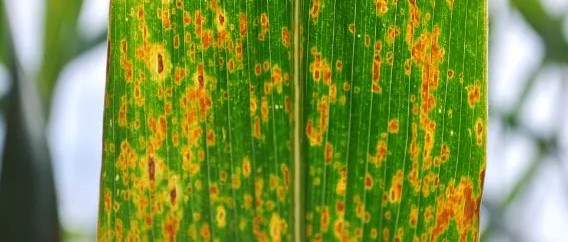
In a Nutshell
The symptoms are caused by the fungus Stemphylium solani. Its incidence and the development of the disease is favored by high humidity, frequent rains and also prolonged drought. Physiological or nutritional stresses are also an important element, particularly during flowering or boll formation. Potassium deficiency is the main factor but it may be coupled to drought, insect pressure or the presence of nematodes in the soil.
Wind also help in the dispersal of the spores of these fungi to other plants. Temperatures of about 20-30 °C are optimal for the development of the diseases. This fungus may form a disease complex with fungi of the genera Alternaria and Cercospora and may be observed within the same field. Alternative hosts include cotton, tomato, potato, pepper, eggplant and onion.
Symptoms of Gray Leaf Spot
- Gray Leaf Spots can be up to about 2 cm in diameter, circular in shape and with purple margins.
- As they mature, they grow forming a concentric pattern and a whitish center develop within the lesions, which may later crack and fall out, producing a “shot-hole” appearance.
- As the disease progresses, the lesions enlarge and become more distinct, with gray centers and dark brown to purple margins. In severe cases, the lesions coalesce, causing large necrotic areas and leaf blighting. Affected leaves may turn yellow and die prematurely.
- In advanced stages, the disease can cause significant defoliation, leading to reduced photosynthetic capacity and overall plant health. This defoliation can severely impact crop yields and the aesthetic value of ornamental plants.
- The lesions normally form on the upper leaves in the canopy and start at the leaf margin and move inward.
- Upper leaves on plant in late bloom stage are the most prone to infection, because of the high demand for nutrients at that time. This disease is secondary if detected and treated with K on time. But it can lead to massive premature defoliation and yield loss if left untreated.
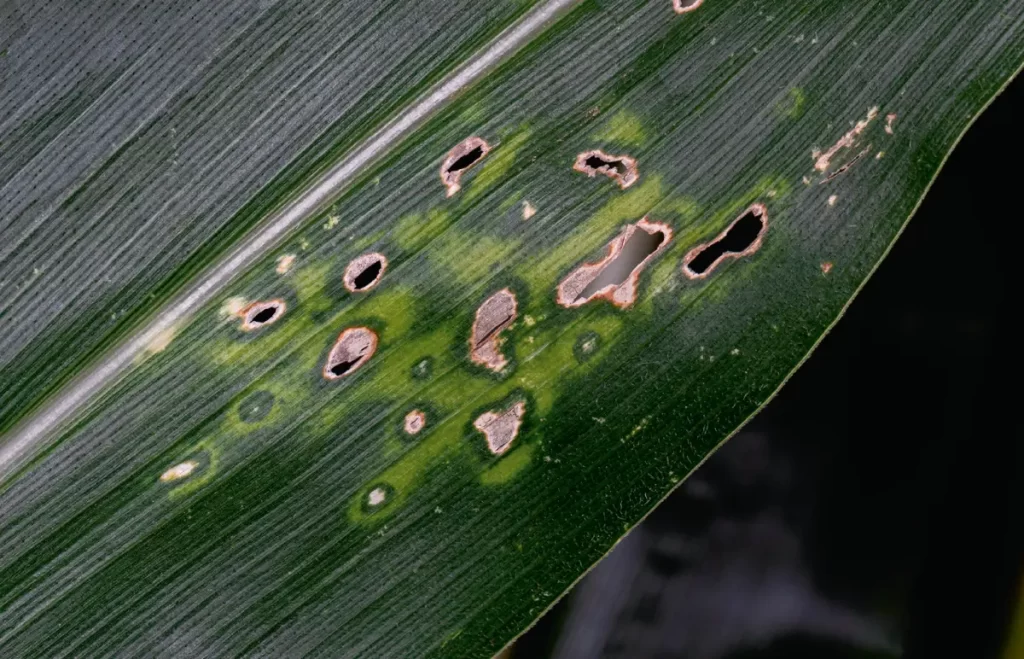
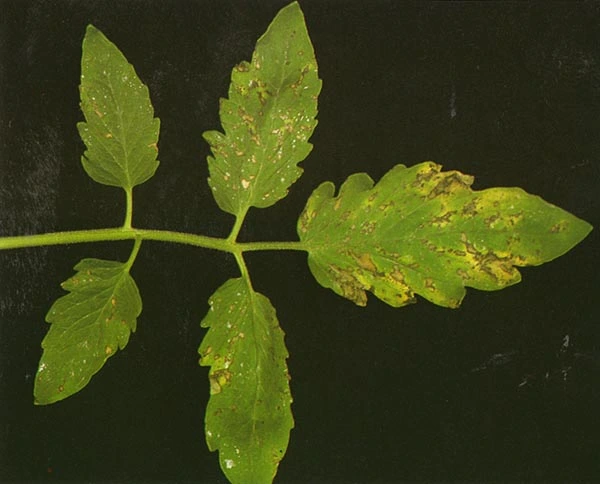
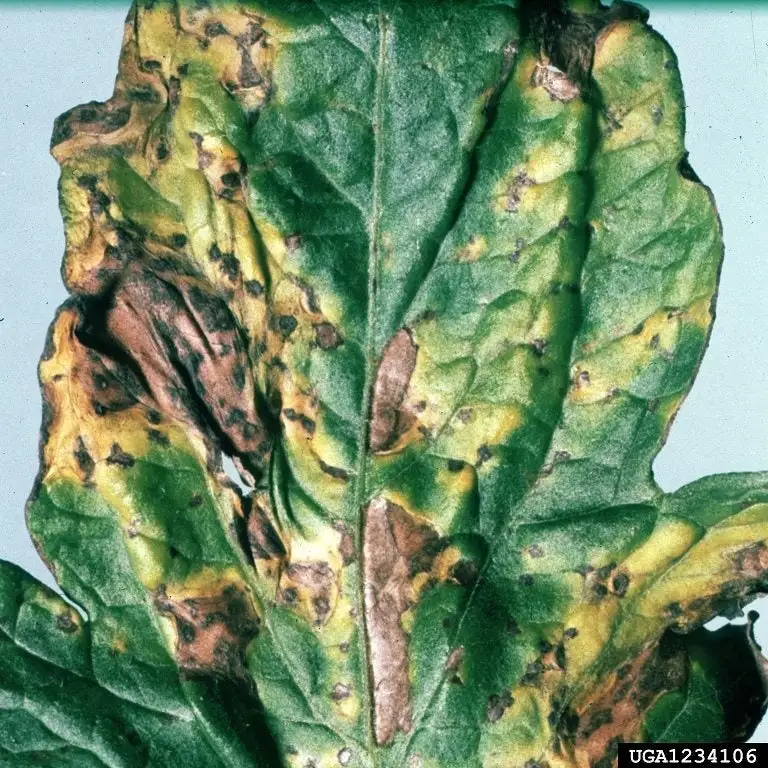
Differentiating from Other Diseases
Gray leaf spot can be confused with other foliar diseases such as rust, leaf spot, or blight. However, its distinct gray-centered lesions with dark margins and the tendency for lesions to merge and cause blighting help to differentiate it from other diseases. Microscopic examination and laboratory tests can provide a definitive diagnosis.
Preventive Measures
- Test fields for potassium is possible and apply this nutrients as part of the basal fertilization if needed.
- Plant long-season varieties with low requirements on potassium.
- Monitor field regularly for signs of the disease.
- Make sure to have vigorous crop with a balanced fertilization.
- Apply fertilizers rich in potassium in a timely manner (split applications), especially on sandy soils.
- Plan foliar applications during the first four weeks of bloom, if required.
- Do not over-fertilize with potassium to solve the problem.
- Irrigate regularly to avoid drought stress.
Organic Control Methods
Cultural Practices
Implementing good cultural practices is the first line of defense against gray leaf spot. These practices include:
- Crop Rotation: Rotating susceptible crops with non-host plants can reduce the pathogen’s survival in the soil.
- Planting Resistant Varieties: Selecting and planting resistant or tolerant varieties can significantly reduce the incidence of gray leaf spot.
- Proper Spacing: Ensuring adequate spacing between plants to improve air circulation.
Prune in Gray Leaf Spot Management:
Pruning and training are vital cultural practices in the management of gray leaf spot, particularly in ornamental plants and turfgrass management. These practices help create an environment less conducive to the development and spread of gray leaf spot by improving air circulation, reducing humidity around the plants, and removing diseased tissue.
Importance of Pruning:
- Improves Air Circulation: Pruning helps to thin out dense foliage, allowing better airflow through the plant canopy. This reduces humidity and leaf wetness, both of which are favorable conditions for the development of gray leaf spot.
- Reduces Disease Spread: Removing infected leaves and stems can help prevent the spread of the pathogen to healthy parts of the plant or to neighboring plants.
- Enhances Plant Health: By removing diseased, dead, or overcrowded branches, plants can allocate more resources to healthy growth, making them more resilient to infections.
How to Prune for Gray Leaf Spot:
- Identify and Remove Infected Leaves: Regularly inspect plants for symptoms of gray leaf spot, such as small, water-soaked lesions with gray centers and dark margins. Prune out infected leaves promptly and dispose of them away from the garden to prevent further spread.
- Thinning Dense Foliage: Prune to open up the plant canopy, particularly in dense-growing shrubs and ornamental plants. This helps to improve air movement and reduce humidity levels around the foliage.
- Proper Pruning Techniques: Use clean, sharp pruning tools to make clean cuts. Disinfect tools between cuts to prevent spreading pathogens.
Biological Controls
To this day, no biological control solution is known against this disease. Follow preventive measures to avoid it. But also you can apply the following practices as Biological Control.
- Beneficial Organisms: Introducing beneficial fungi and bacteria that antagonize the gray leaf spot pathogen can help reduce its impact. These organisms can outcompete the pathogen for resources or directly inhibit its growth.
- Compost Teas and Organic Soil Amendments: Applying compost teas and organic soil amendments can enhance soil health and plant vigor, making plants more resilient to disease.
Natural Remedies
Several natural remedies can help manage gray leaf spot organically:
- Neem Oil: Neem oil has antifungal properties and can be applied to infected plants to help control the disease.
- Baking Soda and Water Spray: A mixture of baking soda and water can create an alkaline environment on leaf surfaces, inhibiting fungal growth.
- Garlic and Chili Pepper Sprays: These sprays can act as natural fungicides, helping to reduce the incidence of gray leaf spot.
Chemical Control Methods
Fungicides
Always consider an integrated approach with preventive measures and biological treatments if available. Fungicides are available to treat this disease (pyraclostrobin, pyraclostrobin + metconazole) but are not normally recommended for its control as they are not economically viable.
Chemical fungicides are often used to manage severe gray leaf spot infestations. Commonly used fungicides include strobilurins and triazoles. When using fungicides, it’s crucial to:
- Timing: Apply fungicides at the right time, typically when the first symptoms appear or during periods conducive to disease development.
- Coverage: Ensure thorough coverage of the foliage to maximize the fungicide’s effectiveness.
Application Techniques
Proper application techniques are essential for effective fungicide use:
- Mixing: Follow the manufacturer’s instructions for mixing fungicides to ensure the correct concentration.
- Application: Use appropriate equipment to apply fungicides evenly across the plant canopy. Ensure all parts of the plant are covered, especially the undersides of leaves where the pathogen may reside.
- Safety Precautions: Always wear personal protective equipment (PPE) such as gloves, masks, and goggles when handling and applying fungicides to protect yourself from exposure.
Resistance Management
To prevent the development of fungicide resistance:
- Rotate Fungicides: Use fungicides with different modes of action in rotation to minimize the risk of resistance development.
- Avoid Overuse: Do not rely solely on chemical fungicides. Integrate them with other control methods to reduce the selection pressure for resistant pathogen strains.
Integrated Pest Management (IPM) Approach
Combining Methods
An Integrated Pest Management (IPM) approach combines organic and chemical control methods to manage gray leaf spot effectively. This approach includes:
- Cultural Practices: Implementing good cultural practices to reduce disease incidence.
- Biological Controls: Utilizing beneficial organisms and natural remedies to suppress the pathogen.
- Chemical Controls: Applying fungicides judiciously to manage severe infestations.
Monitoring and Early Detection
Regular monitoring and early detection are critical components of an IPM program:
- Scouting: Regularly inspect plants for early signs of gray leaf spot. Look for small lesions and other symptoms described earlier.
- Disease Forecasting Tools: Use disease forecasting models and tools to predict when conditions are favorable for gray leaf spot development. These tools can help you time fungicide applications more effectively.
Conclusion
Gray leaf spot, though a formidable adversary for many plant enthusiasts and agricultural professionals, can be effectively managed with the right knowledge and strategies. By recognizing the early symptoms and understanding the environmental conditions that favor its development, you can take proactive steps to protect your plants.
Employing a combination of organic and chemical control methods is the cornerstone of a successful gray leaf spot management plan. Organic practices like crop rotation, planting resistant varieties and using natural remedies such as neem oil and compost teas not only help control the disease but also promote sustainable and environmentally friendly gardening. Meanwhile, judicious use of chemical fungicides can provide a powerful defense against severe outbreaks, ensuring that your plants remain healthy and productive.
Don’t let gray leaf spot dampen your gardening or farming endeavors. With the right knowledge and tools at your disposal, you can tackle this disease head-on and enjoy thriving, beautiful plants. Whether you’re a home gardener, a professional landscaper, or an agricultural producer, these strategies will help you achieve and maintain healthy, disease-free plants.
Take the first step today by incorporating these best practices into your routine. Your plants will thank you, and you’ll enjoy the rewards of a greener, healthier garden or farm. Happy gardening!

FAQ
What is the control of leaf spot?
The control of leaf spot involves several strategies, including:
1. Cultural Practices: Ensure proper spacing and pruning to improve air circulation, use resistant plant varieties, and practice crop rotation to reduce pathogen survival in the soil.
2. Sanitation: Remove and destroy infected leaves and plant debris to reduce sources of infection.
3. Water Management: Avoid overhead watering to reduce leaf wetness duration. Water plants early in the day to allow foliage to dry before nightfall.
4. Fertilization: Maintain proper nutrition to keep plants healthy and more resistant to diseases.
5. Biological Control: Use beneficial organisms like specific strains of Bacillus and Trichoderma that can antagonize leaf spot pathogens.
6. Chemical Control: Apply fungicides as needed, following label instructions for specific timing and application rates.
What pesticide is used for gray leaf spot?
Fungicides are available to treat this disease (pyraclostrobin, pyraclostrobin + metconazole) but are not normally recommended for its control as they are not economically viable.
What is the best treatment for GREY leaf spot?
The best treatment for gray leaf spot is an integrated approach combining cultural, organic, and chemical methods:
Cultural Practices: Plant resistant varieties, avoid excessive nitrogen fertilization, and ensure proper irrigation management.
Organic Methods: Use neem oil, compost teas, and biological control agents.
Chemical Methods: Apply fungicides like pyraclostrobin, pyraclostrobin + metconazole, particularly during high-risk periods when environmental conditions favor disease development.
How to stop leaf spot disease?
1. Monitor Regularly: Inspect plants frequently for early signs of infection.
2. Maintain Cleanliness: Remove and dispose of infected plant material.
3. Optimize Plant Health: Provide adequate water and nutrients to keep plants healthy and resistant.
4. Improve Airflow: Space plants appropriately and prune dense foliage to enhance air circulation.
5. Use Resistant Varieties: Choose plant varieties that are resistant to leaf spot pathogens.
6. Apply Fungicides: Use fungicides preventively or at the first sign of disease, following the label instructions.
7. Prune trees or shrubs to increase light penetration and improve air circulation throughout the canopy.
What is mancozeb fungicide?
Mancozeb is a broad-spectrum contact fungicide belonging to the dithiocarbamate group. It is used to control a wide range of fungal diseases in various crops, including:
1. Mode of Action: Mancozeb works by inhibiting spore germination and disrupting fungal cell metabolism.
2. Application: Typically used as a preventive treatment. It must be applied before or at the onset of disease symptoms for maximum effectiveness.
3. Uses: Effective against leaf spots, blights, downy mildew, and other fungal diseases.
In which plant is gray leaf spot most common?
Gray leaf spot is most common in:
1. Turfgrasses: Particularly St. Augustine grass, perennial ryegrass, and tall fescue.
2. Corn: Zea mays (maize) is also significantly affected by gray leaf spot, causing major economic losses in agricultural settings.
What are the conditions for GREY leaf spot?
Gray leaf spot thrives under specific environmental conditions:
1. Warm Temperatures: Optimal temperatures range from 77°F to 86°F (25°C to 30°C).
2. High Humidity: Humid conditions, with frequent dew or rainfall, provide the necessary moisture for spore germination and infection.
3. Leaf Wetness: Extended periods of leaf wetness from irrigation, rain, or dew are critical for disease development.
4. Dense Planting: Poor air circulation due to dense planting or overgrowth can create microenvironments favorable to the pathogen.
